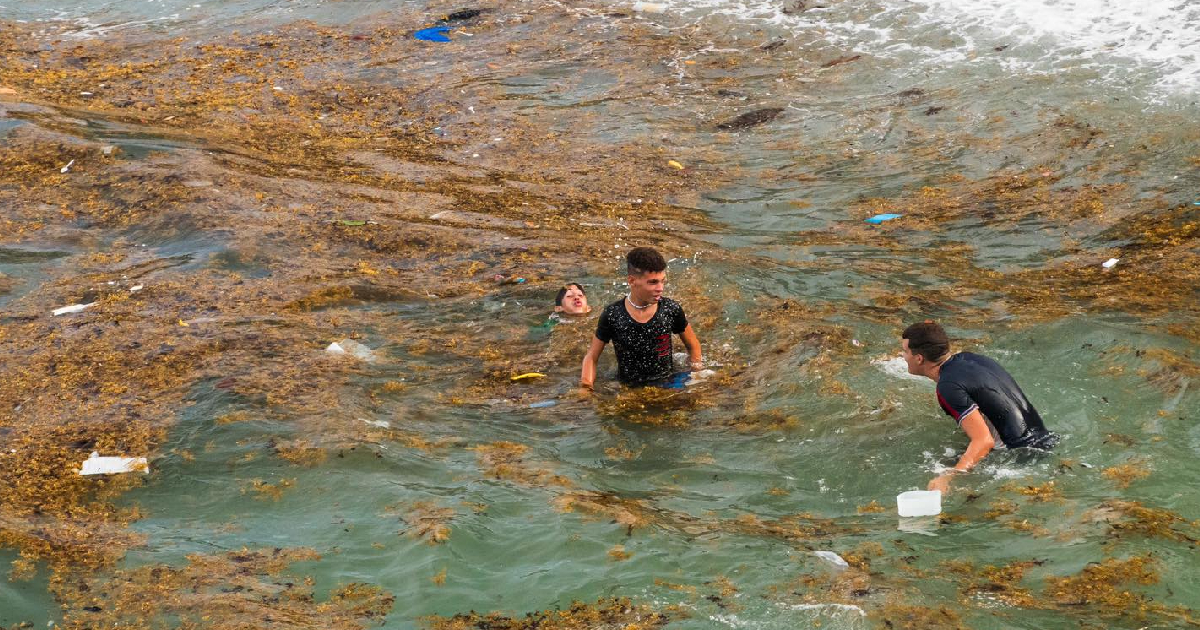
Cuban experts warned about the danger that sargassum represents for the coasts of Cuba, after detecting a notable accumulation of this macroalgae on the coast of Pilón and Playa Caribes, in Baracoa.
The environmentalist profile Secret Nature on Facebook he made a publication warning about the natural phenomenon, accompanied by photos that show the profusion of the macroalgae on the coasts of the extreme east of the country, obtained through the Bojeo expedition to Cuba, which was carried out for seven weeks by the seas of the archipelago.
The note warns about the threat looming over Cuban beaches due to the massive arrival of sargassum, which raises concerns about the environmental and economic impact on the island.
“The imminent danger it poses and its organic origin have set off alarm bells among scientists and entrepreneurs,” the post states.
“Sargassum is a floating macroalgae that forms colonies that cover large areas and move according to ocean currents. They float en masse in the sea, move in shallow waters and end up on beaches. When there is excessive growth, they arrive in places where they normally did not exist and can cause problems,” says one research from the Universidad Veracruzana.
This phenomenon has kept the Cuban scientific community on alert. In April of this year, the official agency Latin Press reported that the Cuban Institute of Meteorology and other scientific entities were keeping their attention on a mass of floating algae (sargassum) in the Caribbean Sea area.
A alert made in March by the Coastal Marine Information and Analysis System (SIMAR) of Mexico estimated that carmelite algae (sargassum or sargassum) would cover an approximate surface of 122,770 square kilometers of the Cuban coastline.
According to the report, the presence of these algae causes not only the loss of water quality, but also an impact on the corals, as it makes them more susceptible to diseases, such as the white syndrome that has caused some barrier reefs in the Caribbean. a mortality of between 30 and 50% of coral colonies.
The entity warned that the accumulation of sargassum and its decomposition in large quantities produces hydrogen sulfide, which can cause nausea, watery eyes, headaches and loss of sleep.
The publication recommended that swimming or coming into contact with these species should be avoided and they should not be confused with masses of seibadal leaves (seagrass plants), which are not harmful.
In June, the medium specialized in tourism It is reported revealed that the sargassum that regularly made its way with the Caribbean current would have modified its trajectory towards the north or northwest, reaching areas where large quantities did not previously arrive, such as Cuba, Haiti and the Dominican Republic, among other destinations.
He Florida Department of Health He pointed out that, in addition to surrounding the beaches and blocking access, when sargassum decomposes it releases hydrogen sulfide gas, which smells like rotten eggs and can cause discomfort in the eyes, nose and throat. Tiny marine creatures, such as jellyfish, can also live in this macroalgae, which can irritate the skin.
What do you think?
SEE COMMENTS (2)Filed in: